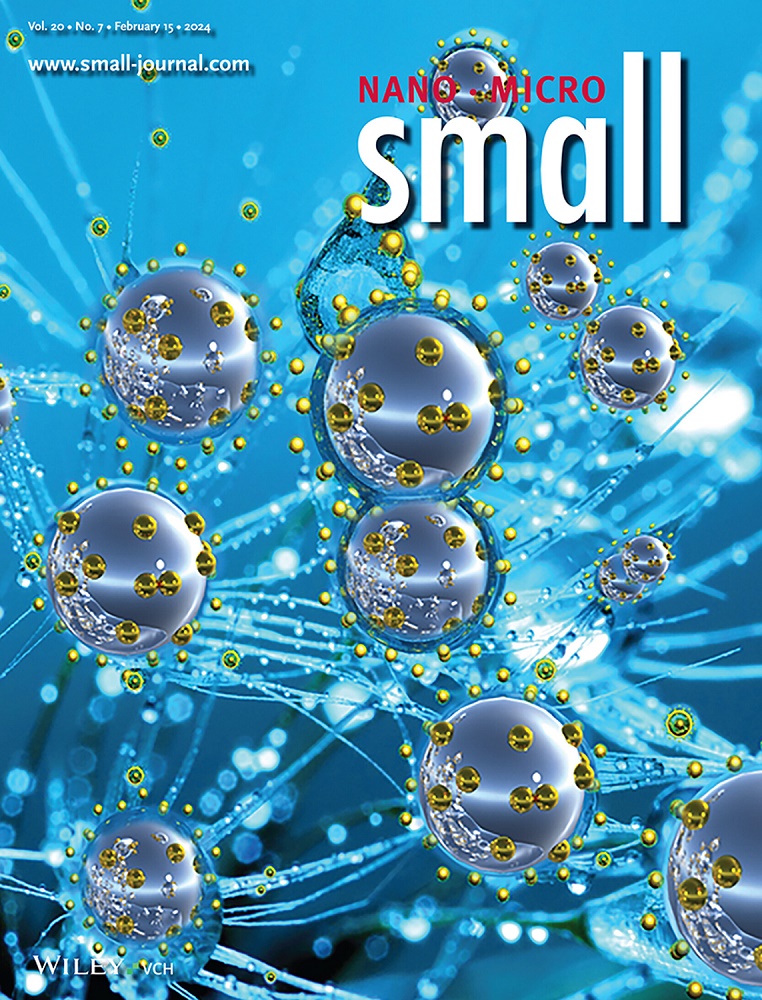Nanoconfined Catalysts for Persulfate‐Based Fenton‐Like Oxidation: Mechanisms, Selectivity, and Environmental Applications
IF 13
2区 材料科学
Q1 CHEMISTRY, MULTIDISCIPLINARY
引用次数: 0
Abstract
Persulfate (PS)‐based Fenton‐like advanced oxidation processes (AOPs) have emerged as promising strategies for the degradation of emerging pollutants. Nevertheless, their practical deployment remains hindered by low PS utilization efficiency, poorly controlled generation of reactive species, and limited catalyst durability. Nanoconfinement engineering has emerged as a powerful strategy to overcome these limitations by tailoring the catalytic microenvironment at the nanoscale. This review comprehensively summarizes the recent progress of nanoconfined catalysts in PS‐based AOPs, including nanoconfined metallic atomic catalyst, metal nanocluster catalyst, metal nanoparticle catalyst, and metal compound catalyst within nanoconfined structures. In addition, the superiorities of these nanoconfined architectures that enhance catalytic performance are analyzed thoroughly in terms of active site dispersion, reaction dynamics, electronic structure, reaction selectivity, and catalyst stability to provide a deeper mechanistic understanding of confinement‐induced catalytic behaviors. Importantly, the reasons why nanoconfinement enables selective regulation of radical and non‐radical pathways for improving oxidation selectivity and robustness in complex water matrices are also summarized. Despite significant advances, challenges remained in precise structure control, mechanistic understanding, and large‐scale implementation are proposed. This review highlights forward‐looking perspectives on the rational design and application of nanoconfined catalysts in PS‐based Fenton‐like AOPs, providing guidance for future advancements in sustainable water treatment.过硫酸盐类Fenton氧化的纳米催化剂:机理、选择性和环境应用
基于过硫酸盐(PS)的类芬顿高级氧化工艺(AOPs)已成为降解新兴污染物的有前途的策略。然而,它们的实际应用仍然受到PS利用效率低、反应物质产生控制不佳以及催化剂耐久性有限的阻碍。纳米约束工程已经成为一种强大的策略,通过在纳米尺度上定制催化微环境来克服这些限制。本文综述了纳米约束催化剂在PS基AOPs中的研究进展,包括纳米约束金属原子催化剂、金属纳米簇催化剂、金属纳米颗粒催化剂和纳米约束结构中的金属化合物催化剂。此外,本文还从活性位点分散、反应动力学、电子结构、反应选择性和催化剂稳定性等方面深入分析了这些纳米约束结构提高催化性能的优势,从而对约束诱导的催化行为有了更深入的机理理解。重要的是,本文还总结了纳米限制能够选择性调节自由基和非自由基途径以提高复杂水基质氧化选择性和稳健性的原因。尽管取得了重大进展,但在精确的结构控制、机理理解和大规模实施方面仍存在挑战。本文综述了纳米限制催化剂在PS基Fenton类AOPs中的合理设计和应用前景,为未来可持续水处理的发展提供了指导。
本文章由计算机程序翻译,如有差异,请以英文原文为准。
求助全文
约1分钟内获得全文
求助全文
来源期刊

Small
工程技术-材料科学:综合
CiteScore
17.70
自引率
3.80%
发文量
1830
审稿时长
2.1 months
期刊介绍:
Small serves as an exceptional platform for both experimental and theoretical studies in fundamental and applied interdisciplinary research at the nano- and microscale. The journal offers a compelling mix of peer-reviewed Research Articles, Reviews, Perspectives, and Comments.
With a remarkable 2022 Journal Impact Factor of 13.3 (Journal Citation Reports from Clarivate Analytics, 2023), Small remains among the top multidisciplinary journals, covering a wide range of topics at the interface of materials science, chemistry, physics, engineering, medicine, and biology.
Small's readership includes biochemists, biologists, biomedical scientists, chemists, engineers, information technologists, materials scientists, physicists, and theoreticians alike.
 求助内容:
求助内容: 应助结果提醒方式:
应助结果提醒方式:


